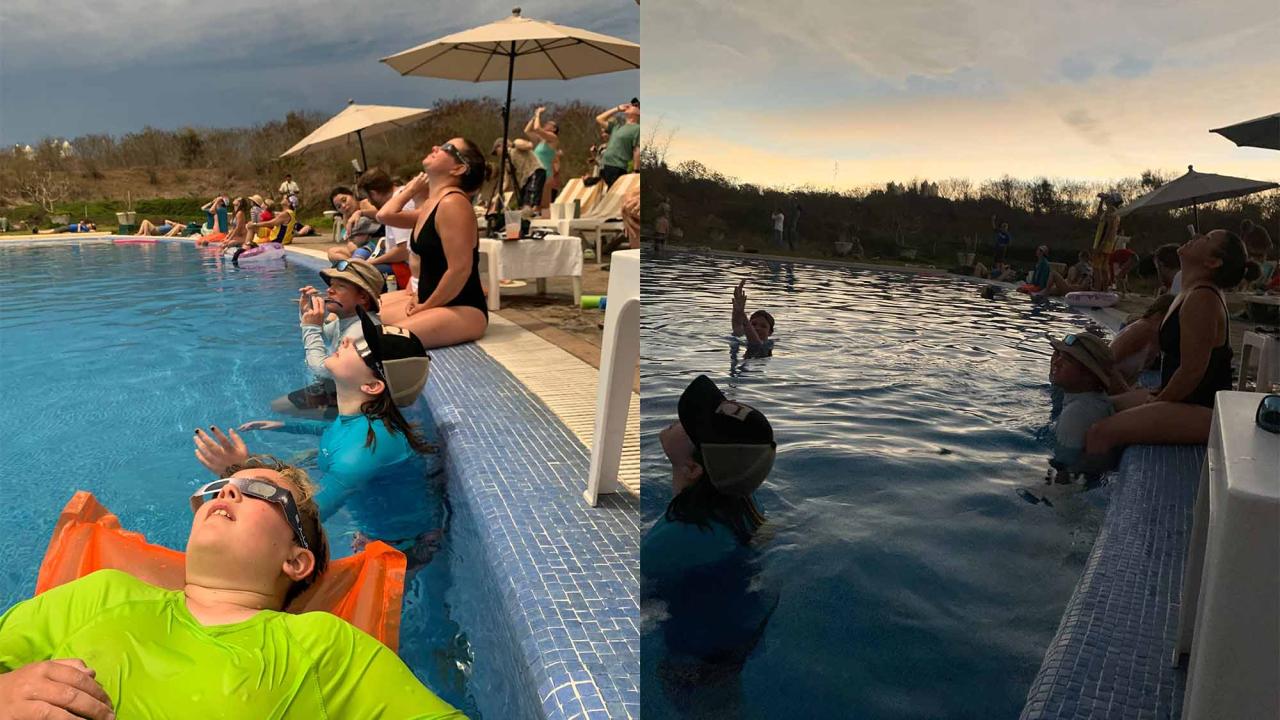Faculty and staff traveled thousands of miles for a few minutes of darkness Monday (April 8).
They scattered to locations as distant as Mazatlán, Mexico, and Montreal, Canada, to watch the total solar eclipse from the path of totality, the places where the sun’s light was completely obscured by the moon for a few minutes.
Becky Oskin, director of communications and marketing for the Office of Public Scholarship and Engagement, traveled Friday to Grimsby, a small town near Toronto where she has family.
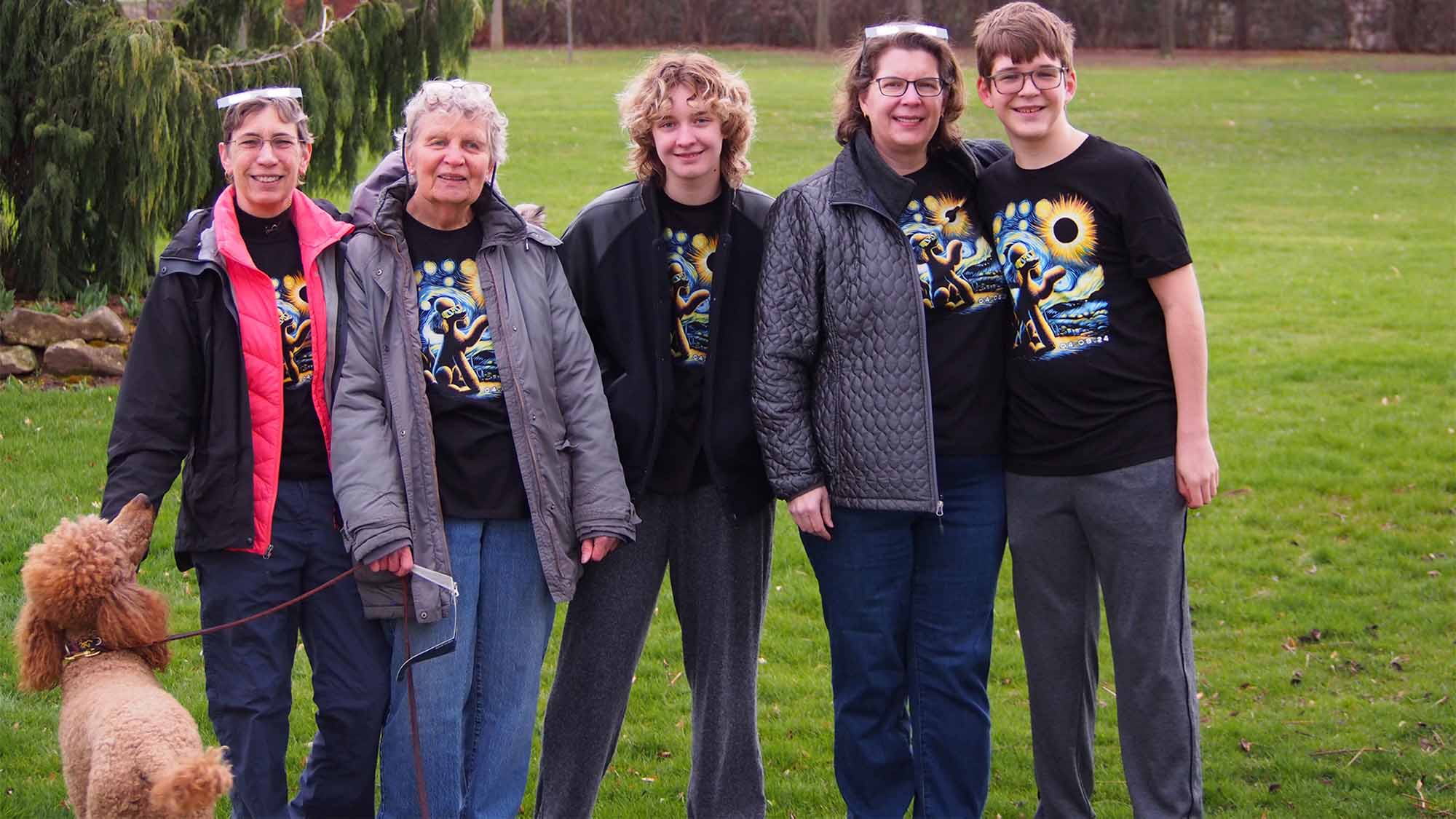
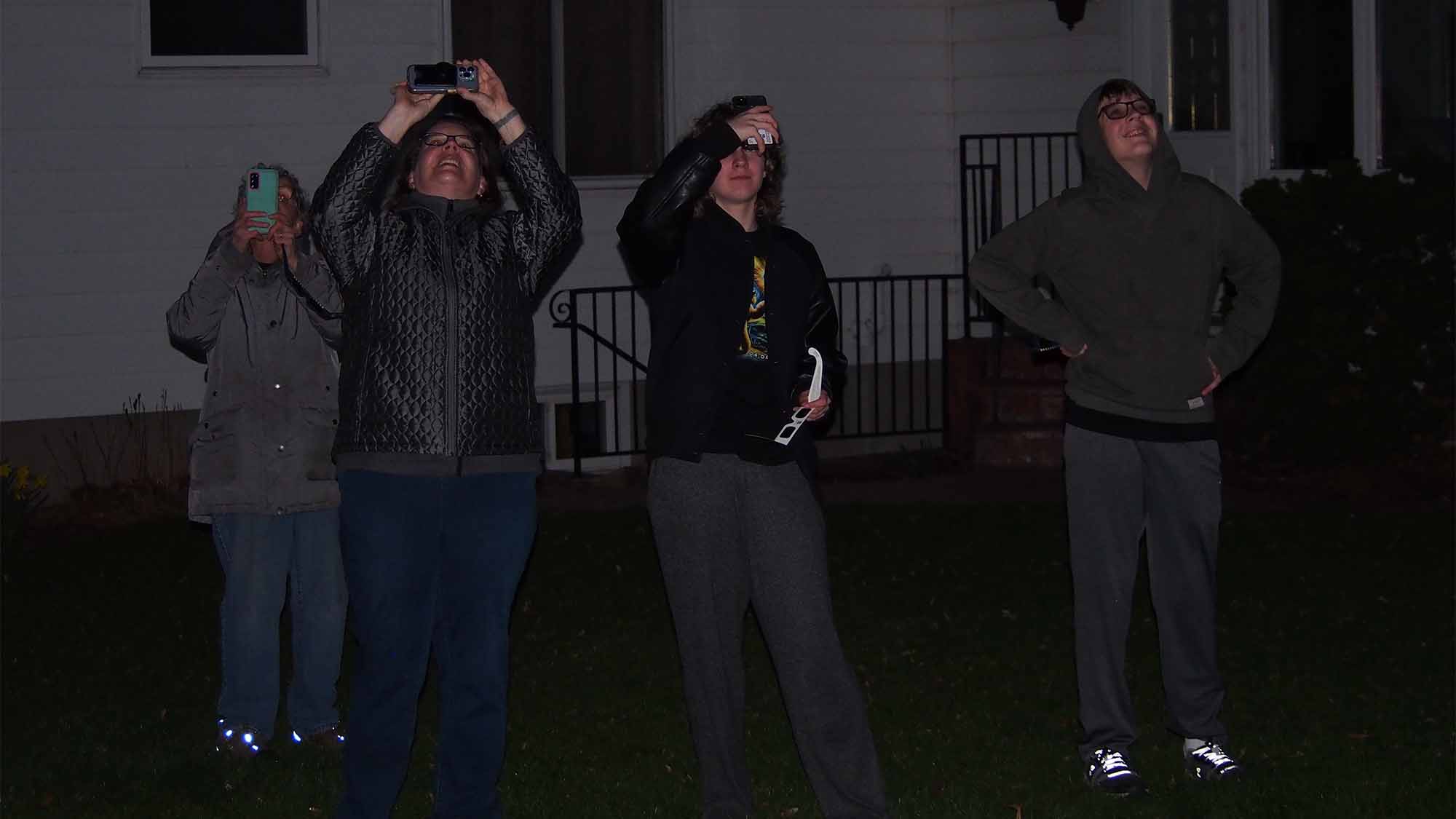
“We had two days of beautiful weather and then woke up to clouds,” Oskin said. “The first 20 minutes of the eclipse were mostly hidden by clouds, but they thinned just in time for us to clearly see totality. It was amazing to see the sky darken so suddenly! The birds quieted and Venus came out and was visible just below the sun’s corona. The horizon around us was pink and yellow and all the street lights came on. Truly worth the trip to experience a total eclipse.”
Lori Lubin, a professor of physics and astronomy, had been planning to travel to New York but redirected her trip to Montreal because of the weather forecast.
“Despite some cloud coverage, it was a spectacular celestial and, honestly, human experience!” she said, noting that she and her sister made friends and exchanged contact information with their “eclipse neighbors.”
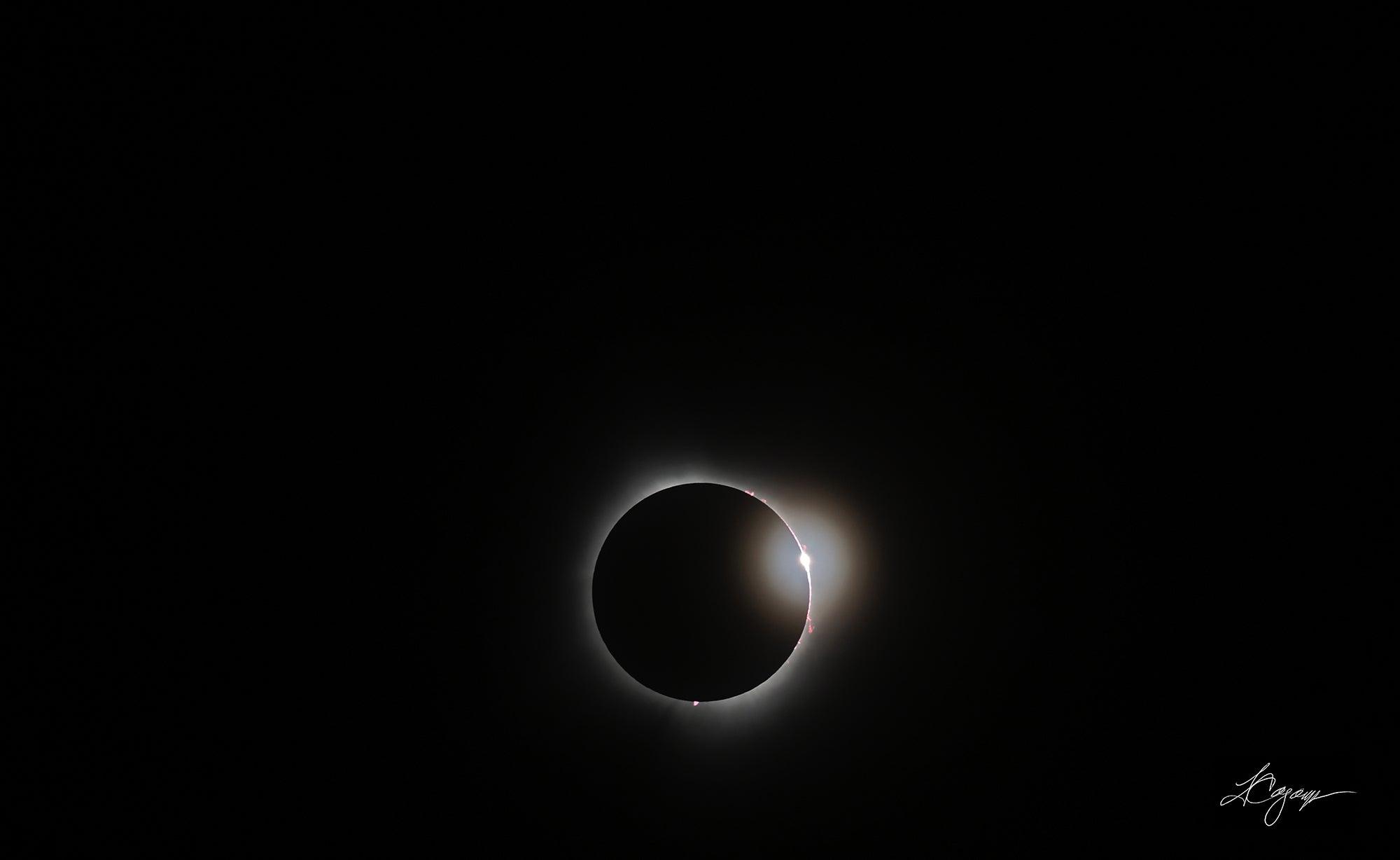
Kat Kerlin, a news and media relations specialist in the Office of Strategic Communications, traveled to Mazatlán with her family.
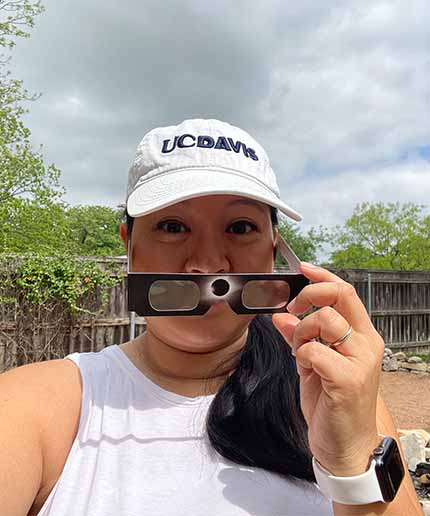
“No picture my phone can take can possibly do totality justice, but that was one of the most beautiful, powerful experiences I’ve ever had,” she said. “Now I get it.”
Karla Fung, director of social media in Strategic Communications, watched the eclipse from the backyard of a Texas Airbnb.
“Super duper cool to be here for this,” she wrote on social media, posing for photos in a UC Davis hat.
Also traveling to Texas was Melanie Lansford, contracts and grants manager for the Center for Neuroscience. In 2017 she watched the eclipse from Madras, Oregon, an experience that hooked her on eclipse-watching but also taught her to beware of the post-totality traffic jams. This time she traveled to Kerrville, an hour outside San Antonio, hoping to experience another “magical and electrifying” show.
The clouds had other plans, blocking much of her view and allowing only intermittent glimpses at the eclipse.
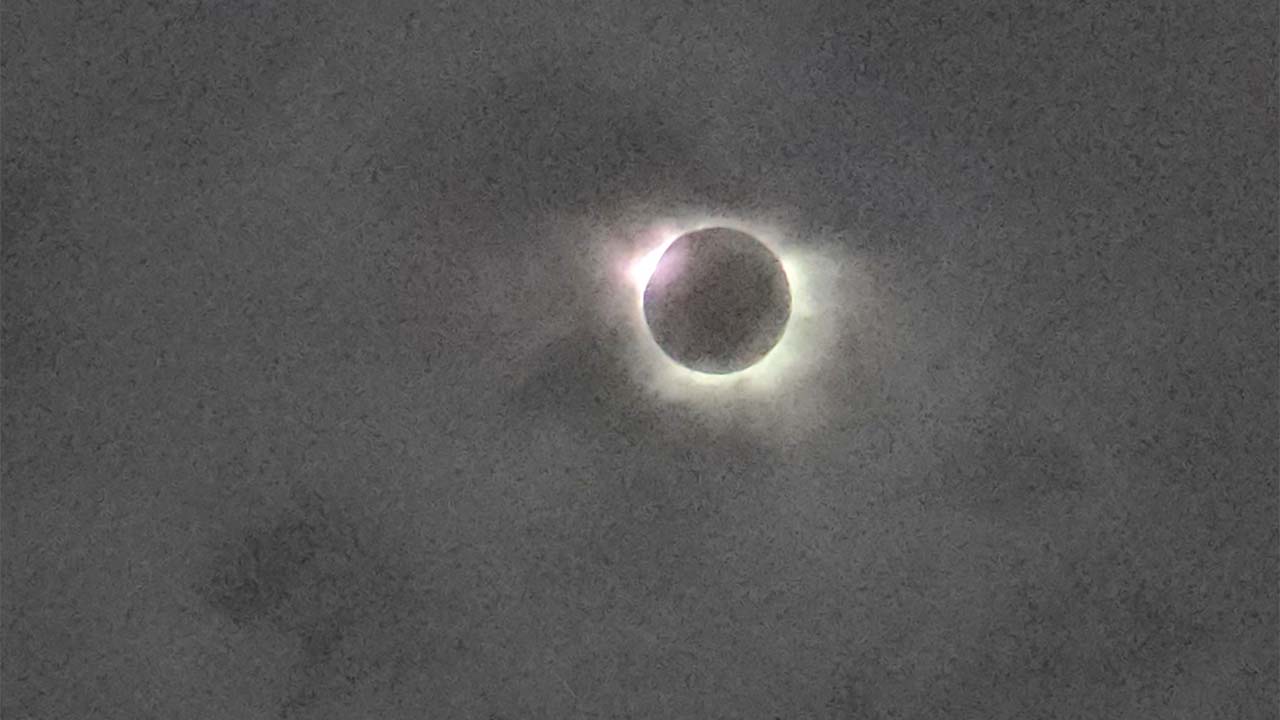
“Once the totality started, we had about 10 seconds of visibility and then the blackest cloud I had seen in a while covered the sky until long after totality ended,” she said. “It was a letdown, but the few seconds of totality was incredible nonetheless. … I am bummed that we didn't get the show we have been looking forward to for years, but I am still glad we made the trip anyway.”
Gina Plessas, who works in financial services at Continuing and Professional Education, drove for two days to watch from Midlothian, Texas, and said the trip was worth the effort.
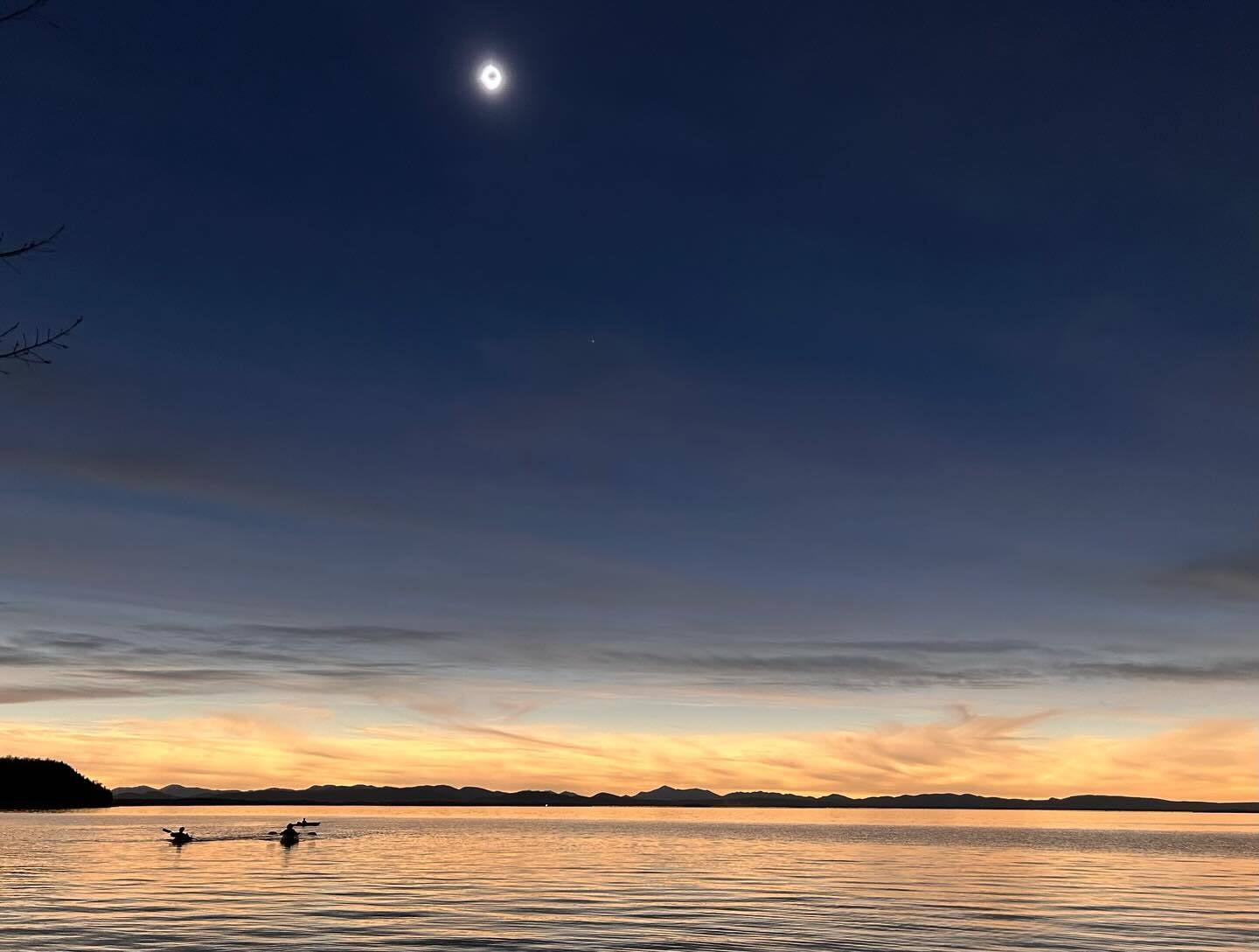
Iris Chelaru works remotely for Information and Educational Technology from her home in Massachusetts, and traveled to Colchester, Vermont. She described the traffic from eclipse-watchers as “nuts.”
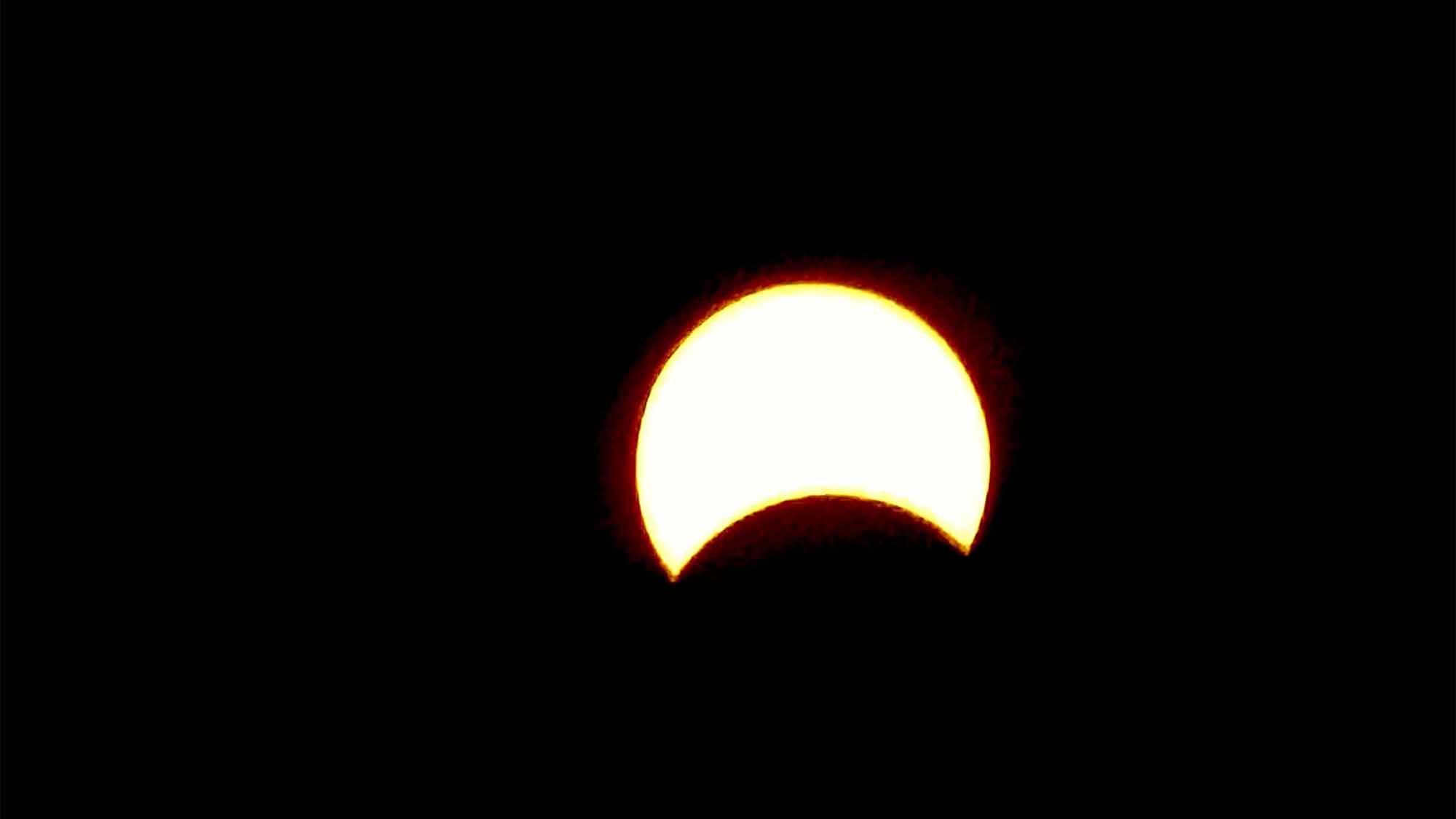
In Davis, the moon covered about a third of the sun, making for some good photos but no mid-day darkness.
“This is my second time observing a solar eclipse,” said Quazi Abir Hassan Roddur, a Ph.D. student in the Animal Biology Graduate Group’s Quantitative Genetics Lab who photographed the eclipse in front of the Meyer Hall.
He added that he has been interested in interstellar phenomena since he was a child. “So, I was very excited about this too.”
Media Resources
Cody Kitaura is the editor of Dateline UC Davis and can be reached by email or at 530-752-1932.
